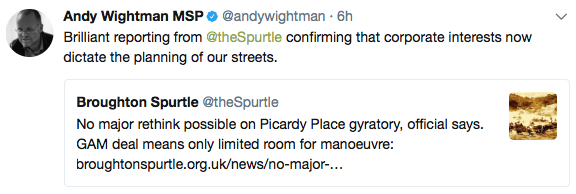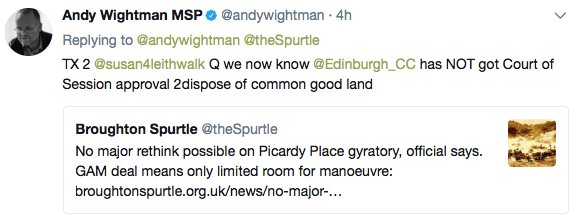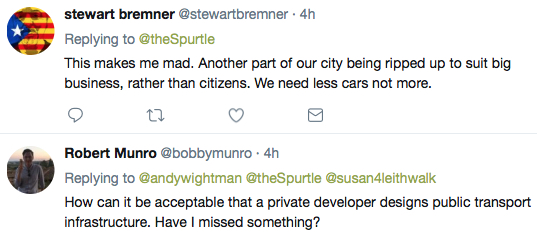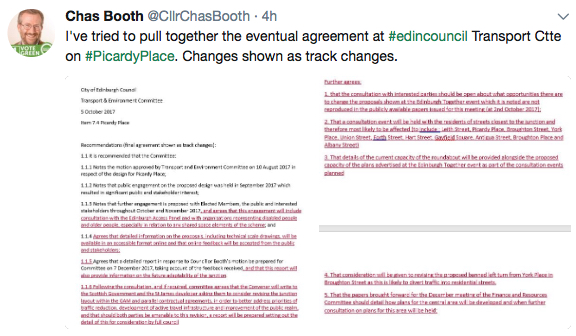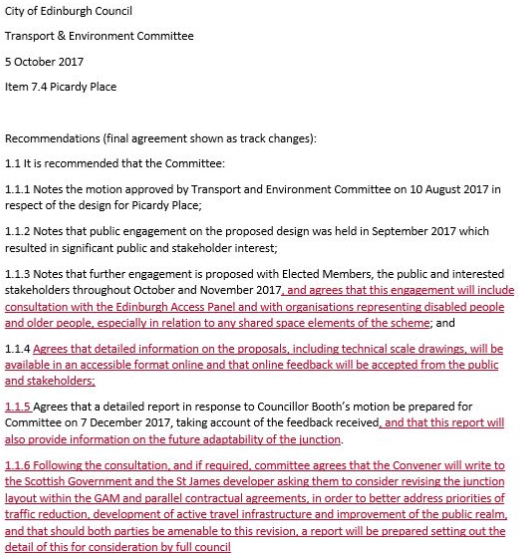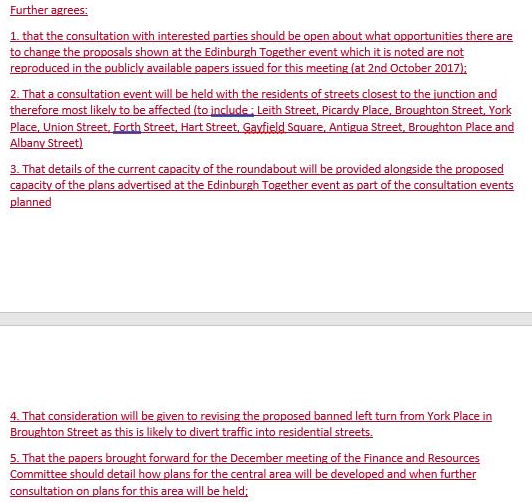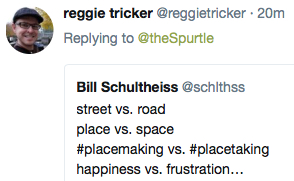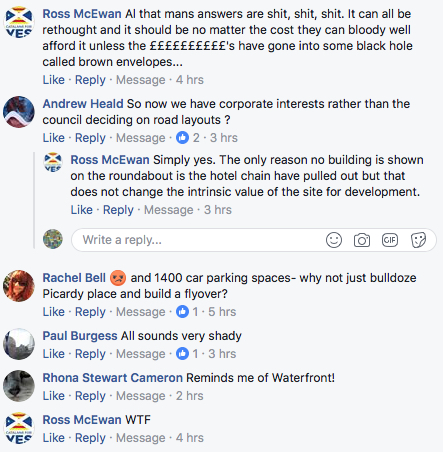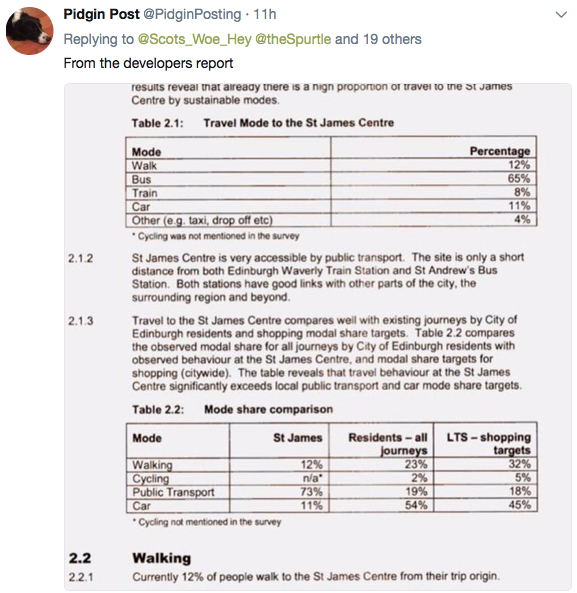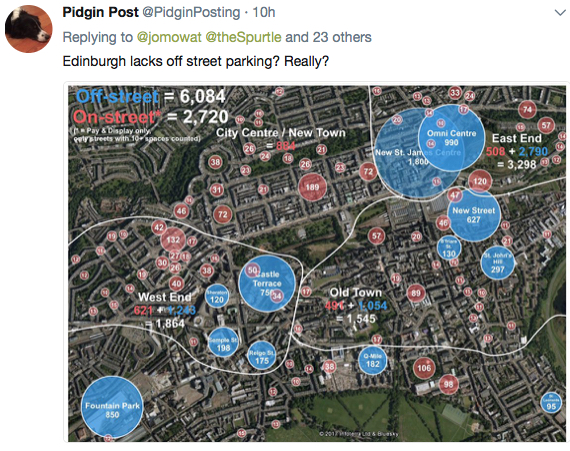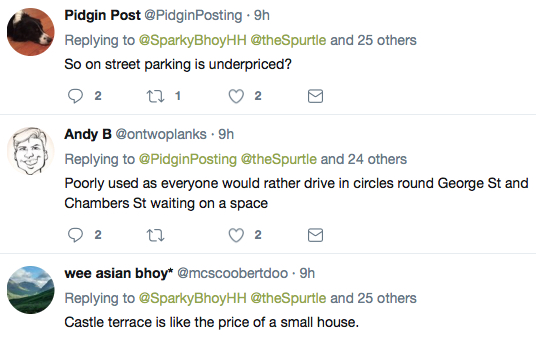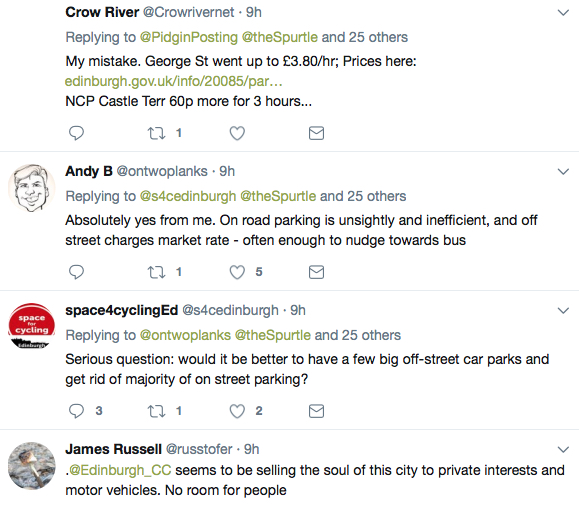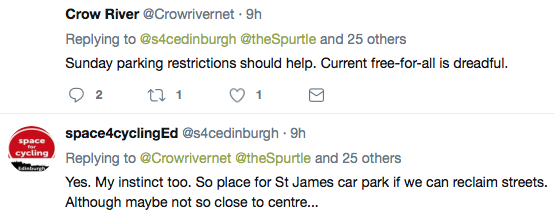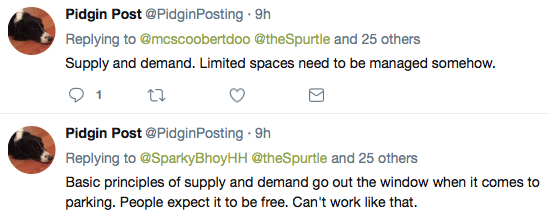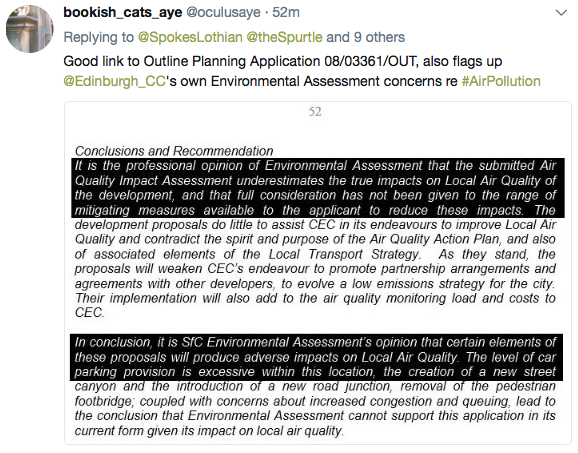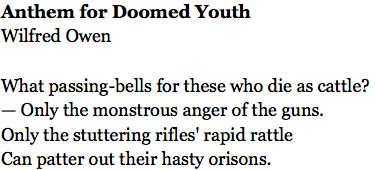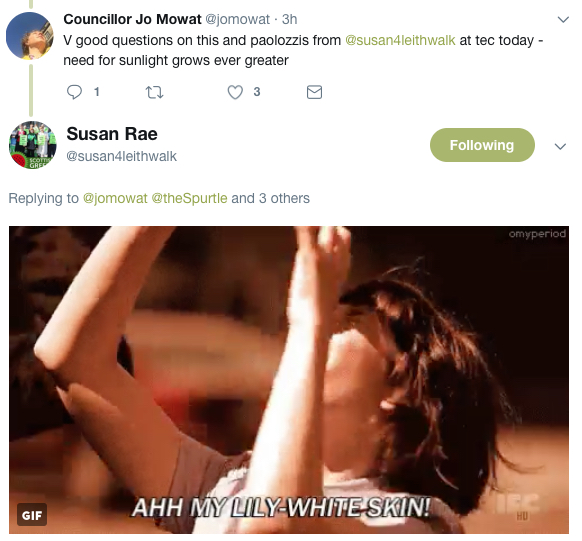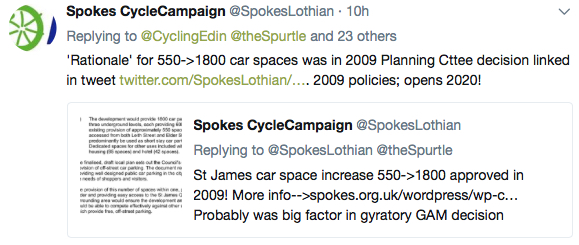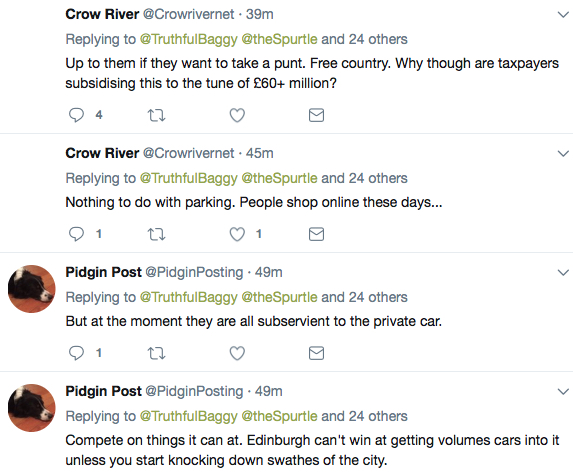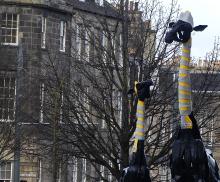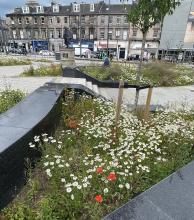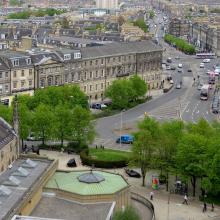
ONLY LIMITED ROOM FOR MANOEUVRE
Fundamental redesign of the proposed Picardy Place gyratory is not possible if it entails spending more money or time on the project.
So said Paul Lawrence, City of Edinburgh Council’s Executive Director of Place, in answering questions at today’s Transport & Environment Committee.
Councillors were considering a Report into progress of the proposals so far, including the need for further public engagement on issues of traffic management and development potential at this key entry into the city.
GAM deal is contractual block
Gyratory plans considered by the Council in March 2016 were ‘embedded’ into the £60m+ investment-generating Growth Accelerator Model contracts it signed with St James Quarter developer TH Real Estate and the Scottish Government in June 2016.
The Report (see foot of page) states that as part of the GAM, ‘the developer has contractual obligations for the delivery of “public realm and tram proofing works at Picardy Place” and a “multi-modal transport interchange at the junction of Leith Walk, Leith Street and York Place”.
‘Delivery of the GAM works is a key component of enabling the future tram extension and also creating a strategic interchange that will assist in delivering an integrated public transport system.’
That doesn’t mean that the Council is completely ‘fettered’, said Lawrence in answer to questioning by Cllr Charles Booth (Ward 13). There are still some limited opportunities for amendment and improvement, but they must be made collaboratively with GAM partners. In informal discussions, the Scottish Government have made it clear that they will provide no more money, and THRE have expectations about timing and the unacceptable cost implications of lengthy overruns.
More and better consultation
Lawrence accepted that further dialogue was necessary given intense public interest in the proposals, and was open to changes being made. But he defended the gyratory plan, saying it was the ‘optimal’ compromise between the competing and sometimes contradictory requirements of pedestrians, cyclists, public transport providers and private motorists.
Convener Lesley Macinnes (Ward 16) insisted future consultation was being taken very seriously and would not be ‘a sop’.
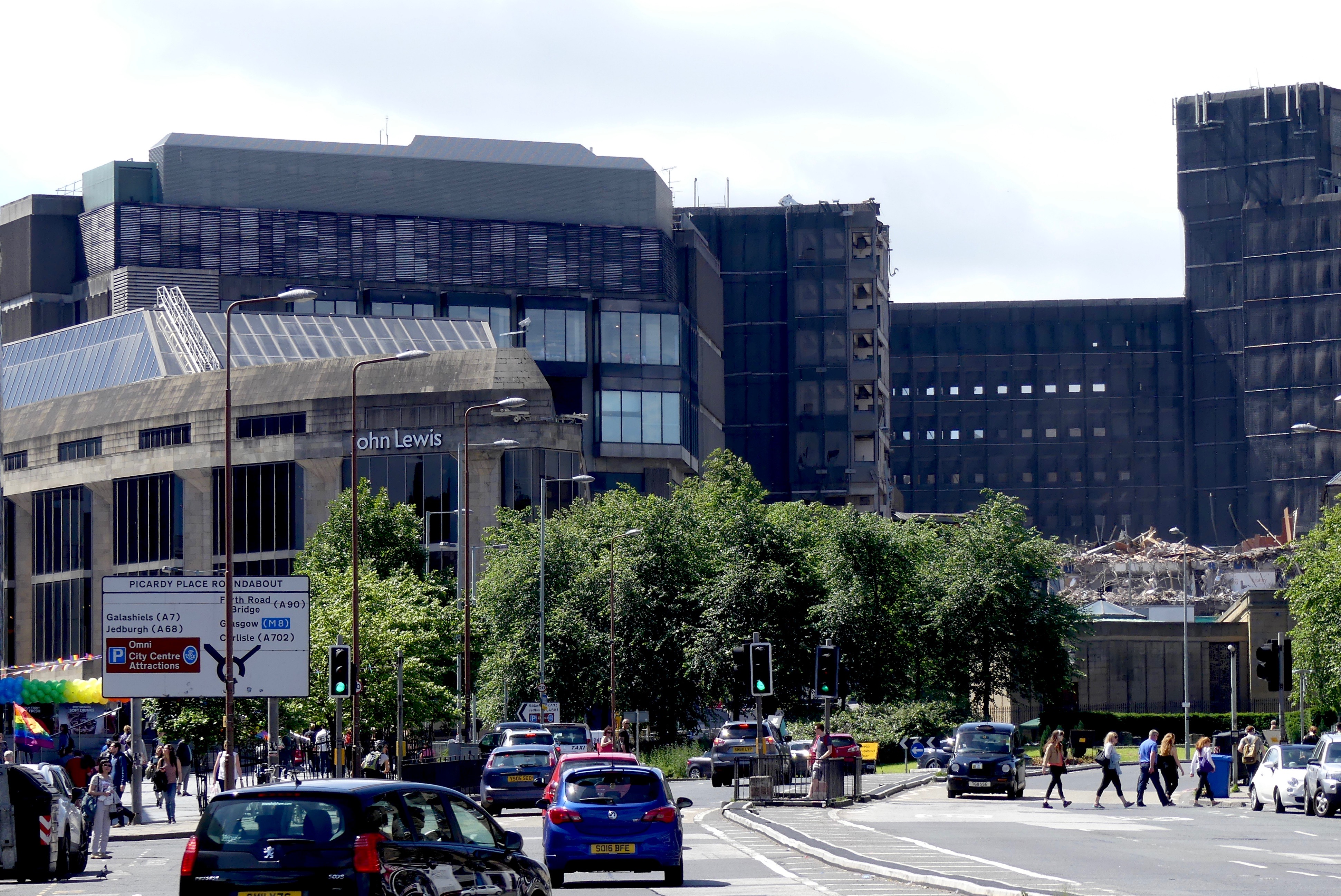
Island future not yet decided
Regarding development of the island site at the centre, Lawrence said nothing had yet been decided. The Finance & Resources Committee had the political role of deciding whether to simply sell it, procure a developer, or refashion it as public realm. ‘Anything is possible at this stage.’ The Council has no contractual arrangement about this with THRE, he said, although there are commercially sensitive issues here which he would not elaborate upon in public.
In response to a question from Cllr Susan Rae (Ward 12), an official clarified that part of the island is inalienable Common Good land, and its sale would require going to the Court of Session.
Cllr Joanna Mowat (Ward 11) questioned whether an island originally scoped to maximise development potential for a hotel was still necessary in these dimensions to facilitate traffic. Lawrence responded obliquely, saying that at no time during his presence within the Council (since 2015) had maximising development space at the centre of Picardy Place been discussed. The challenge had been to find transport solutions.
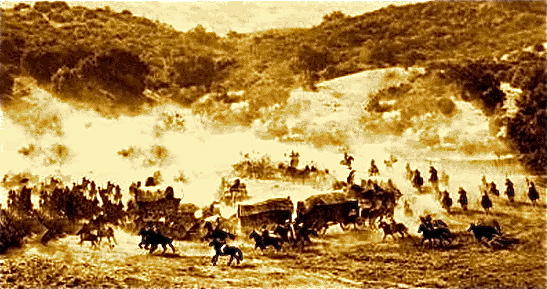
Sustrans
Cllr Scott Arthur (Ward 8) called for greater detail on GAM-busting criteria in the next report on 7 December. He asked why Sustrans had pulled out of consultation. Lawrence responded that Sustrans’s alternative proposals had proved unworkable when subjected to detailed traffic modelling by Council officials.
Cllr Booth followed up by asking whether Sustrans were right to claim that prioritising transport inevitably led to inferior public realm. Lawrence said balancing the two was possible but difficult. When officials and councillors began considering Picardy Place four years ago, for example, deliberately restricting private road use here had not been discussed as it is now. Cllr Booth asked for further clarification in a future report on Sustrans’s claim that the gyratory plans do not meet Scottish Government guidelines. Cllr Mowat later criticised some aspects of Sustrans’s plans to divert traffic through the Old Town as inappropriate.
August, foot, community council
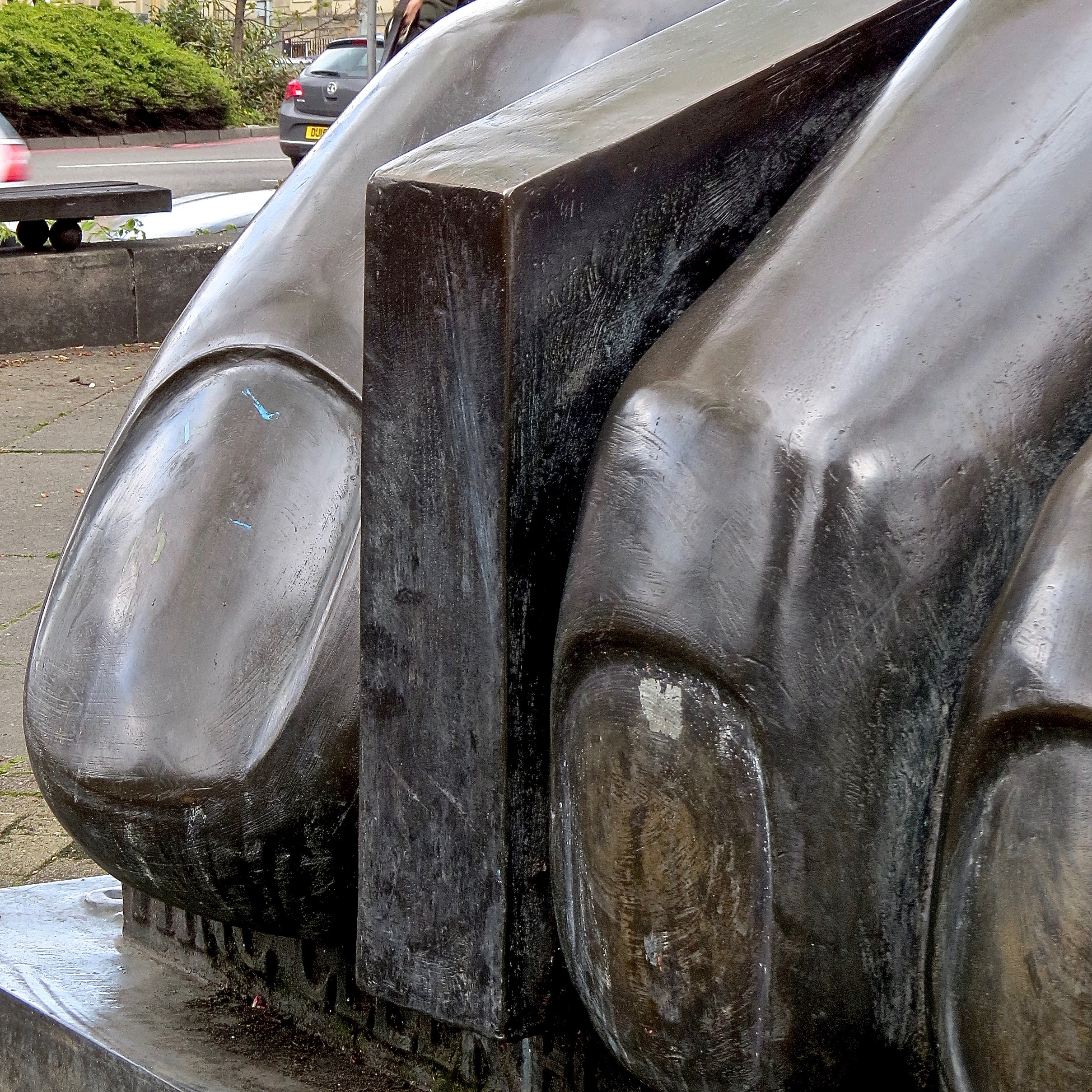
Cllr Rae sought (and received) assurances that removal of Paolozzi’s ‘Manuscript of Monte Cassino’ would be temporary, that ground stability in Hillside Crescent Gardens would be carefully assessed before re-siting there, and that local members would be kept better informed on the subject in future. Many of them had, she said, only learned of the proposed move through a certain ‘august’ local journal. Lawrence apologised.
Cllr David Key (Ward 9) called for more detailed plans in future consultation and reports, and joined-up thinking about Picardy Place in the context of the East–West cycle corridor and Leith Walk Programme. He called for greater consultation with groups as well as constituents. Lawrence agreed wholeheartedly, and as evidence stated that he would be addressing the Broughton and New Town Community Council [sic] on Monday 9 October.
As detailed in the Report, councillors will receive additional briefings on the design and public feedback later this month, with members of the public receiving the same a week later. Public engagement will follow on proposals for the central island in November. All dates to be confirmed.
The Committee meeting is available as a podcast here.
Got a view? Tell us at spurtle@hotmail.co.uk and @theSpurtle and Facebook
---------------
The following selection of comments has been screenshot from our Facebook page here https://www.facebook.com/Broughton-Spurtle-116862745052401/ and our Twitter feed herre: https://twitter.com/i/notifications
